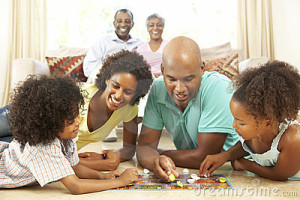Positive Parenting and Relationships

For this blog, I want to cover a positive parenting approach that is a much more effective alternative to corporal punishment. In my last blog, I reviewed why corporal punishment is an ineffective (and even counterproductive) strategy for managing children’s behavior. Again, if one already believes corporal punishment is an effective behavior management strategy, then it is unlikely the I, or anyone else, will change their mind. When it comes to parenting, sometimes it is like debating which is the “right” religion or faith.
The good news about this blog is that the following approach can be used with all children and, if done consistently and correctly, will reduce the need for coercive or punitive interventions. No matter what a person’s parenting approach is, I believe that most parents would prefer not to use punitive measures to manage behavior if there is a better alternative. Positive parenting approaches are preferable to more controlling and coercive approaches. So, here’s the better alternative!
Influence vs. Control
Before I go into the alternative approach, I want to discuss a little bit about the underpinnings of why this approach works. It is about control versus influence that we have with our children. We can influence our children (and other people), but we cannot completely control them. Efforts to control our children’s behavior can often be met with resistance, which typically increases as children get older and into their teenage years. People have a fundamental psychological need for autonomy, power, and control. Thus, when we try to control others (including our children), it can arouse a need within them to reinstate their autonomy. In social science, this is known as psychological reactance.
So, controlling, coercive parenting approaches can cause a push-back in children in the form of psychological reactance. Moreover, a developmental challenge that children have is to learn to use freedom in a responsible way. If parents primarily use external control methods, such as various rewards and punishments, to get children to do what they want, then children don’t really learn to self-regulate. What happens when these external controls are taken away? Many of these kids go absolutely bananas when given freedom, such as when entering college, because they haven’t learned how to self-regulate. When children’s behavior is always regulated for them through the use of various rewards and punishments, they are not afforded the opportunity to develop the skill of self-regulation.
The Relationship Is Our Leverage of Influence
Rather than relying on bribery, tangible rewards, corporal punishment, and other methods of external control, a more effective way to influence children in a positive way is to invest in building a strong relationship with them. I’m not advocating being a doormat, being uninvolved, or never setting limits or imposing consequences. Rather, I’m advocating that we invest more of our attention as a parents in building a positive connection with our kids. When we have a strong relationship with our children, then we are more likely to be able to influence them in a positive direction.
We can reflect on our own lives to see the truth in this. Think of various teachers, coaches, trainers, and bosses that you’ve had over the years. Can you think of many instances in which you would work very hard for them just because you felt connected with them and wanted to meet or exceed their expectations? Think of close friends or your significant other – how often do you do things for them for the sake of the relationship rather than to gain a tangible reward or avoid some punishment? A strong relationship bond is the foundation of our influence as parents…as it is in all our social relationships.
Using the “Magic Ratio” for a Positive Relationship
So, what’s an effective approach to creating a strong relational bond with our kids? Drs. John and Julie Gottman have spent their careers studying couples and what makes romantic relationships work…or not. One of their findings is that in stable, healthy relationships there is a ratio of 5:1 positive feelings and interactions for every one negative feeling and interaction. If this ratio is closer to 1:1 or, worse, 1:5, then the relationship is likely will be unhealthy and even toxic. Researchers have found this same “magic ratio” present in other healthy, positive relationships as well such as teams at work, friendships, and classrooms.

Why Use the Magic Ratio as Parents?
In order to create a bond with our children so that we can influence them in a positive way, it is critical that we use the magic ratio in our interactions with them. We need to freely show feelings of love, affection, and positive attention. We should look for opportunities to acknowledge and praise our children (Note: specific praise is usually more effective than general praise). Through creating this positive relationship with our kids, they are much more likely to listen to us, heed our advice, and respect our rules and limits. This will reduce the need to use interventions such as time-outs, natural consequences, and the loss of privileges. I’m still not an advocate of corporal punishment but, for those of you who still choose to use it, use of the magic ratio will at least reduce the frequency that you feel the need to use it.
One of my favorite adages is, “An ounce of prevention is worth a pound of cure.” When it comes to reducing the need for any coercive, controlling parenting measures, using the magic ratio in our interactions with our kids is key. It helps us create a strong, healthy relationship with them so that we can have a positive influence on their lives without constantly resorting to external control.
